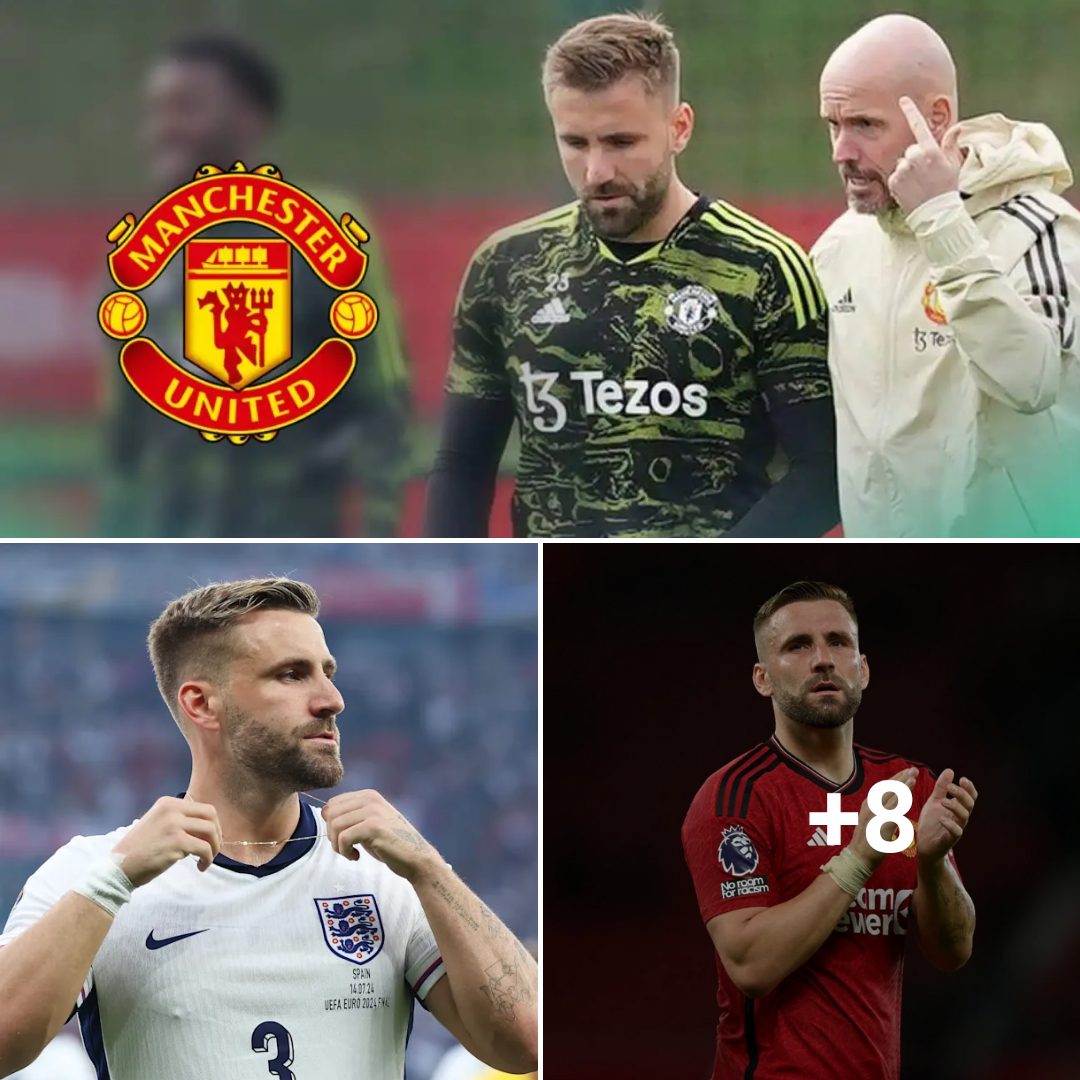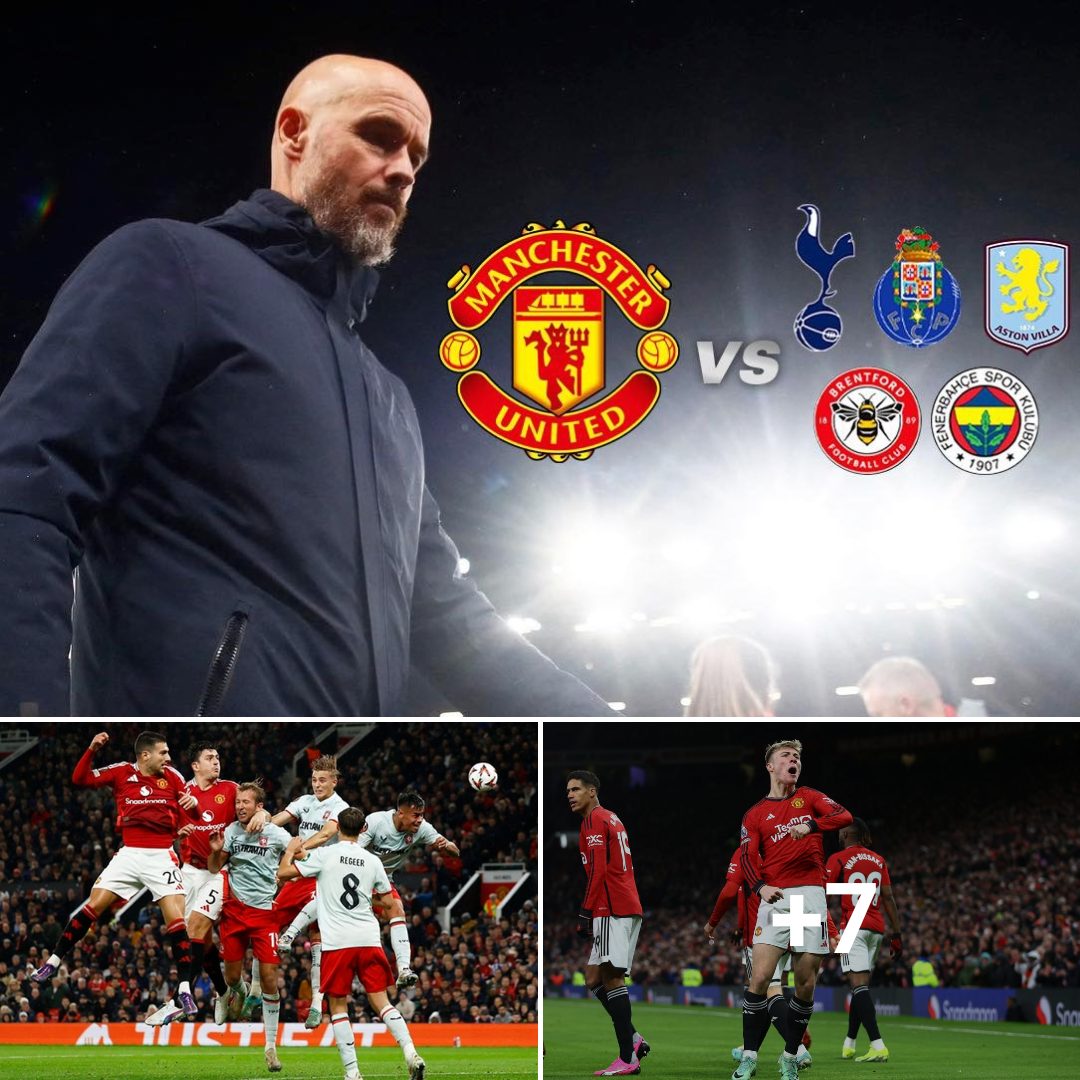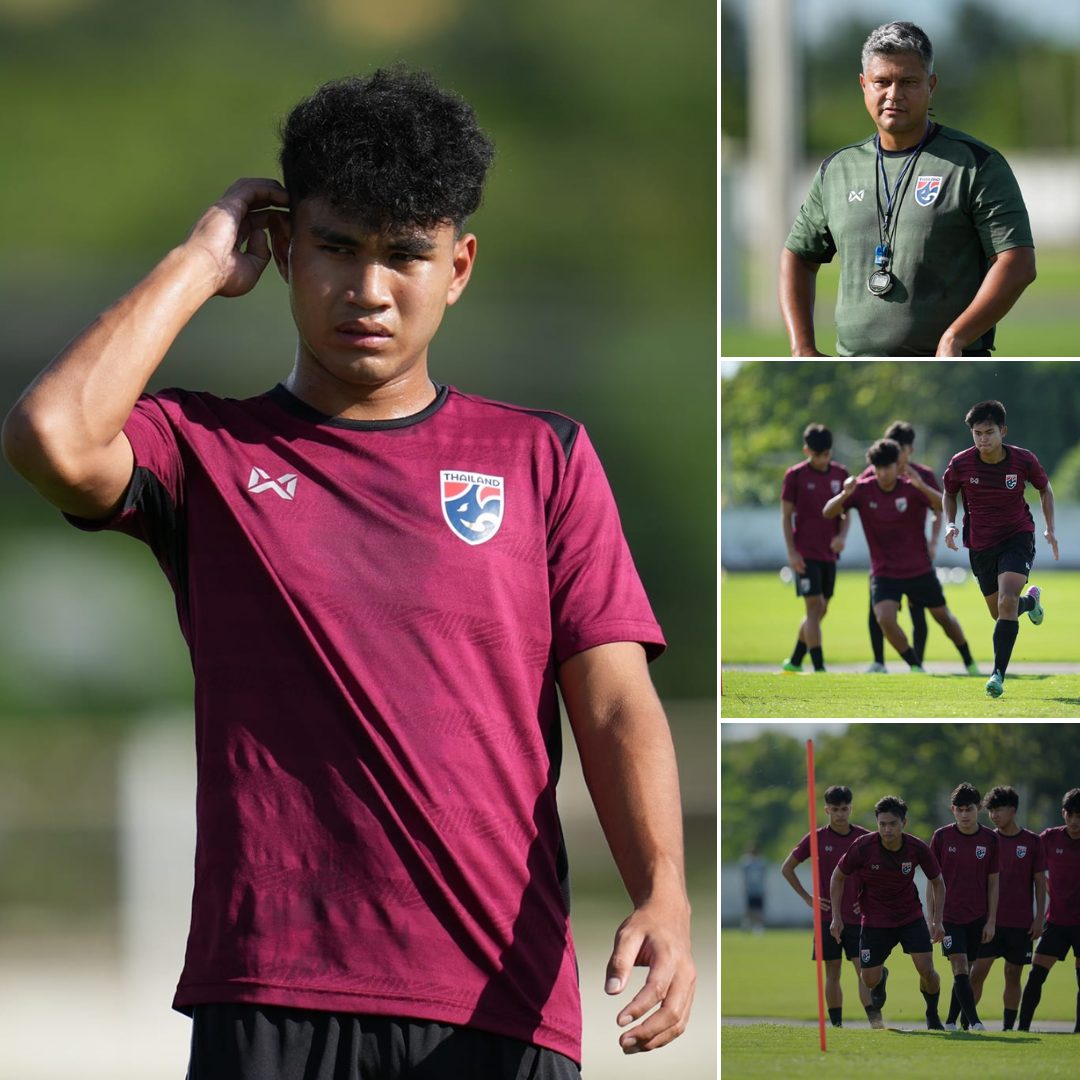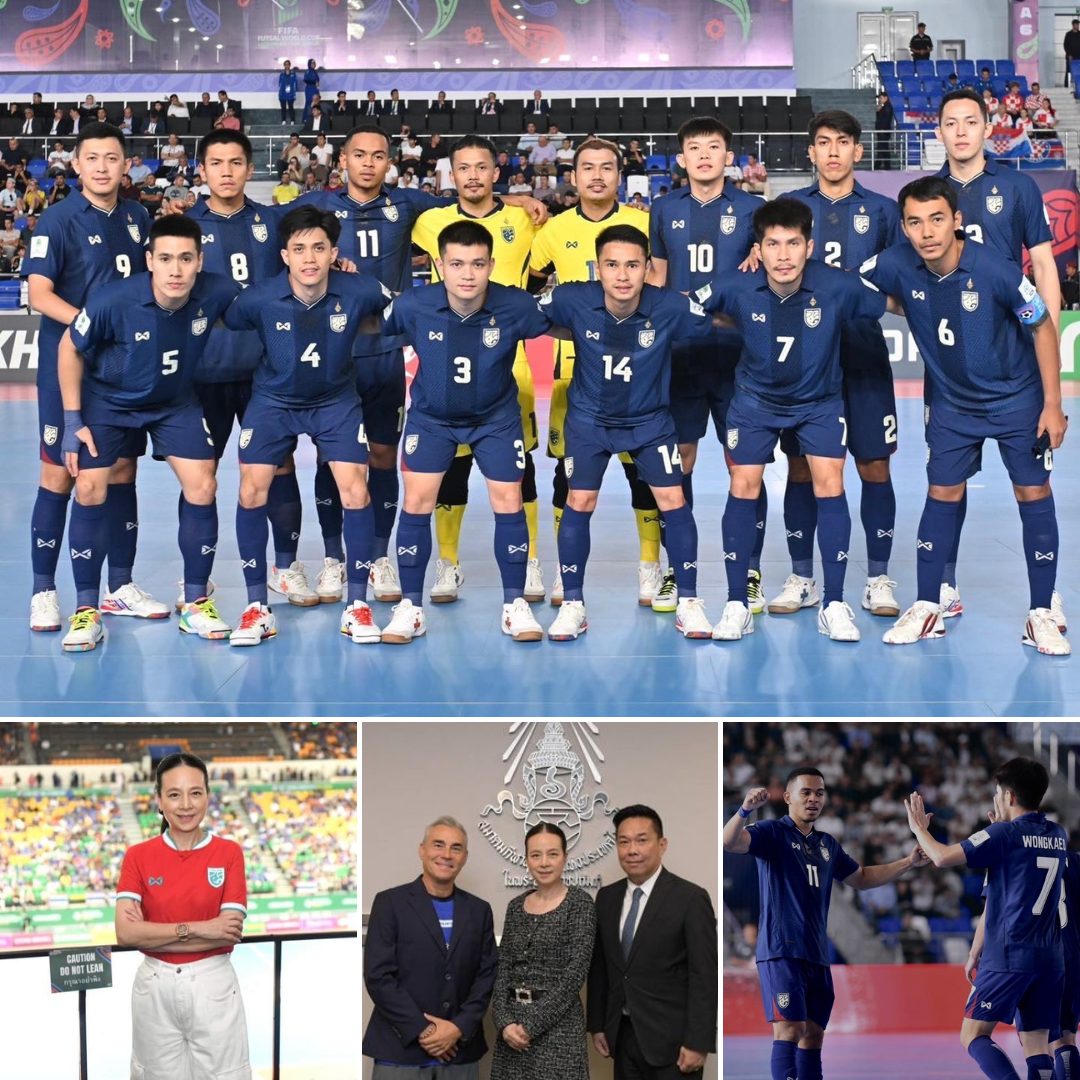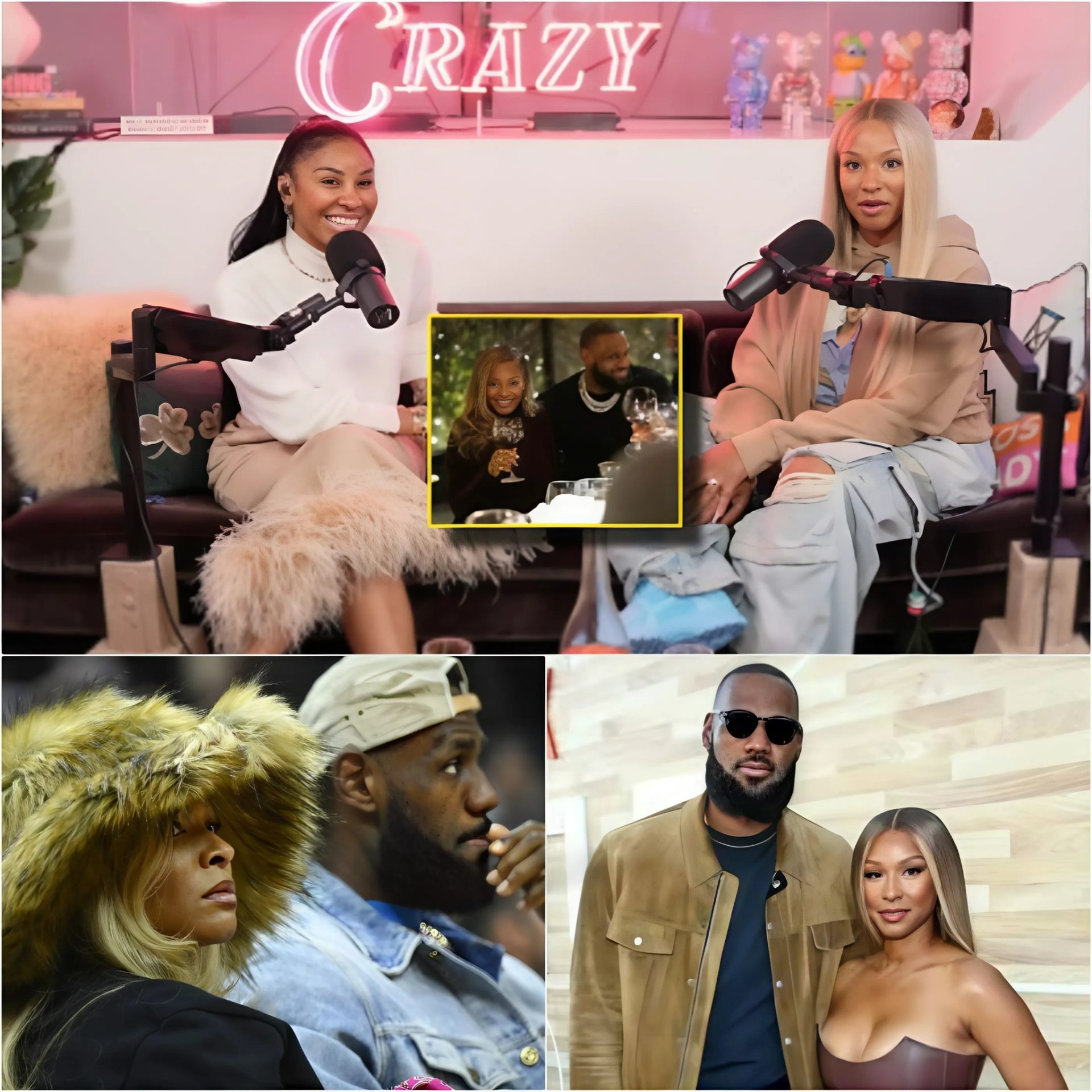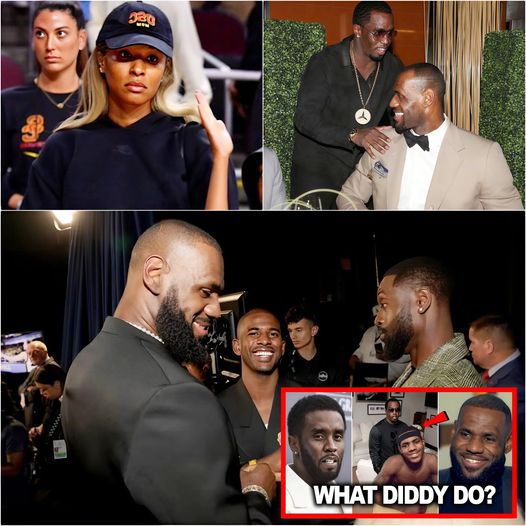Free agency officially starts Monday, and these are the best players available
The end of the playoffs means that every Major League Baseball team will now shift their attention to the offseason. Free agency will officially begin Monday, five days after the Texas Rangers’ World Series-clinching win. With that in mind, CBS Sports decided this would be a prime occasion to roll out our complete free agent rankings.
Below, you’ll find the top 50 players available on the market based on how things stand. (Do note that we reserve the right to make any needed additions or subtractions based on extensions, qualifying offers, and unexpected option decisions.)
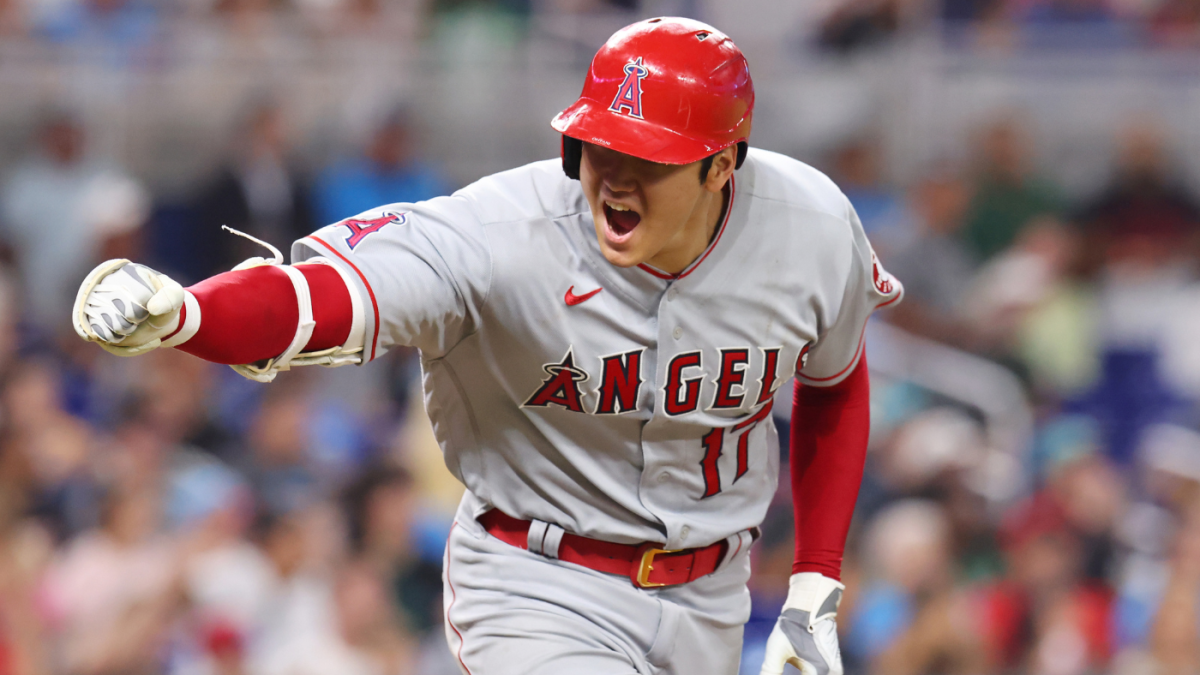
As always, these rankings are determined by a combination of expected average annual value and impact. They are formed through firsthand analysis; conversations with scouts, analysts, and other front-office types; and historical research. In an attempt to undermine the hours spent doing serious work, we’ve also included a one-line summary of the player’s profile and a few potential suitors. Please do not be the person who complains about those; every player on here has more than two or three plausible landing spots, and while we try to mix up which teams we name on similar players, that aspect of this piece is not particularly high on the priority list.
Now, let’s get to it.
1. Shohei Ohtani, two-way player
- The short version: The most talented player in baseball history will soon become its richest.
- Potential suitors: Dodgers, Padres, Giants

Welcome to the most anticipated free agency in league history. Ohtani will not pitch next year after undergoing elbow surgery to correct a torn ulnar collateral ligament, yet he’s expected to be in someone’s lineup as a DH come Opening Day. (He’s slated to return to the mound in 2025.) Ohtani is certain to receive a mammoth, record-breaking payday in the interim. Why wouldn’t he? He’s ranked in the top 10 in both ERA+ and OPS+ since debuting, and along the way has single-handedly shifted the Overton Window on two-way players. It’s fair to wonder how his workload will change in the future — perhaps he someday shifts to a relief role? — but that’s the risk you gladly stomach when you’re blessed with the opportunity to sign the kind of anomaly who invokes references to Leon Day, Bullet Rogan, Martín Dihigo, and Babe Ruth. “Destiny is the music of the improbable,” Kenneth Patchen once wrote. “Were it otherwise, almost anyone could exist.” Make sure you find a way to enjoy Ohtani’s tune this winter, even as the noise around him ramps up.
2. Yoshinobu Yamamoto, RHP
- The short version: Yamamoto has an unmatched combination of youth, track record, and talent.
- Potential suitors: Yankees, Mets, Phillies
Yamamoto is a five-time All-Star, a three-time ERA champion, and a two-time Triple Crown champion in NPB. Last year, he won the Pacific League’s equivalents of the MVP and Cy Young Awards. He is, in our estimation, the best pitcher in the world to have never suited up for an MLB team. Oh, and he just celebrated his 25th 𝐛𝐢𝐫𝐭𝐡day in August. Talent evaluators have raved to CBS Sports about Yamamoto for years, citing his high-grade command over a good arsenal as the most impressive part of his game. He throws a mid-90s fastball about half the time, complementing it with a swing-and-miss splitter and a high-spin curveball. Each of those pitches went for a strike at least 65% of the time this season, reinforcing the notion that he paints with a fine-tip brush. There’s more than enough precedent to feel confident in Yamamoto making an easy adjustment to the MLB ball and schedule. In turn, there’s no reason for teams to hold back in their bidding, rendering it highly likely that he shatters Masahiro Tanaka’s record $155 million contract.
3. Cody Bellinger, CF/1B
- The short version: Bellinger produced big numbers despite so-so ball-tracking data.
- Potential suitors: Cubs, Giants, Red Sox
There are three parts to a magic trick. First, showing something to the audience. Then, making that something disappear. Finally, making that something reappear. A lot of magicians use rabbits, coins, or planted volunteers. The baseball-minded among them, such as Bellinger, use their offensive output. He began his career in brilliant fashion, culminating in winning the 2019 National League Most Valuable Player Award. That production then vanished, to the extent that he was non-tendered last winter by the Dodgers. Bellinger has pulled off the final leg of the trick this season, reestablishing himself as a well-above-average hitter, albeit in inexplicable fashion. His ball-tracking data does not align with what you would expect from someone who once threatened 50 home runs: his average exit velocity puts him in company with Jean Segura, Yan Gomes, and Miguel Rojas. The secret to Bellinger’s reemergence seems to be that he traded quality of contact for quantity of contact. It worked this season. Teams must now decide how confident they are in Bellinger’s new trick, or if the sustainability of his resurgence is a matter of magical thinking.
4. Matt Chapman, 3B
- The short version: Elite third baseman with big power and questions about his hit tool.
- Potential suitors: Dodgers, Blue Jays, Yankees
The reprise of this free agent class is “yes but.” It applies to Shohei Ohtani’s UCL, Blake Snell’s command, Cody Bellinger’s ball-tracking data, and so on. In Chapman’s case, it applies to his hit tool. He’s a brilliant defensive third baseman with elite strength and plate discipline. He’s also extremely ineffectual against elevated pitches, resulting in a well-below-average in-zone contact rate. That, plus Chapman’s tendency to hit pop-ups, explains why he’s so streaky. (To wit, his April OPS this season was nearly higher than the sum of his May and June OPS.) The marketplace is largely without good infielders, so someone will take the plunge and hope that he can deliver a few more years of well-above-average play. There’s just more downside risk than his otherwise strong foundational s𝓀𝒾𝓁𝓁s would suggest.
5. Aaron Nola, RHP
- The short version: Nola is steady even if his ERA isn’t.
- Potential suitors: Phillies, Cardinals, Diamondbacks
Nola has an inverse Saberhagen thing going on. He’s been excellent in recent even years and only average in odd years. There’s no predictive power to be found in that observation, but noticing patterns in the wild sure pleases the lizard brain. Anyway, several veteran talent evaluators expressed that they would prefer to sign Nola over Blake Snell no matter the financial component. The reasoning is straightforward: Nola’s ERA has bobbed up and down over the last handful of seasons, but he throws a lot of strikes and has required just one stint on the injured list since 2018. We suspect teams will be interested in seeing how Nola performs in front of a different defense, too.
6. Blake Snell, LHP
- The short version: Great results plus bad command equals a polarizing pitcher.
- Potential suitors: Phillies, Mets, Diamondbacks
Here’s a complete list of pitchers who have won the Cy Young Award in each league: Gaylord Perry, Pedro Martinez, Randy Johnson, Roger Clemens, Roy Halladay, and Max Scherzer. Snell might join that group this winter, even if it feels wrong to see his name in that class. There’s no knocking his bat- or barrel-missing abilities, but his control leaves a lot to be desired. He threw fewer than 60% strikes this season, and his walk rate was nearly one of the 20 highest posted by a starting pitcher in the Expansion Era. The central conflict in Snell’s game is that he’s as chase-dependent as any starting pitcher — fewer than one-third of his secondary pitches were located within the zone — yet his coercive ability grades as below-average statistically. That combination leads to a lot of deep counts and a lot of early exits; this season marked the second time that he’s a) started 30 or more games and b) cleared 140 innings. Snell’s stuff has allowed him to overcome, and for all we know, that’ll continue to be the case. Still, you can’t blame anyone who develops the collywobbles when they think about the left-tail possibilities of his s𝓀𝒾𝓁𝓁 set.
7. Eduardo Rodriguez, LHP
- The short version: Rodriguez remains a mid-rotation starter after two weird years in Detroit.
- Potential suitors: Phillies, Yankees, Mets
It’s a shame most people will remember Rodriguez’s season for what didn’t happen — the deadline deal to the Dodgers that he vetoed using his no-trade clause — rather than what did: him reasserting himself as an above-average starter. Rodriguez showed improved velocity (up about half a tick) and bat-missing ability throughout the 2023 season. He shuffled his repertoire, too, ditching his sinker to lean more heavily on a three-pitch mix that included his low-90s four-seam fastball, a cutter he can command to both sides of the plate, and a changeup that led the way in whiffs. Rodriguez will turn 31 in April, and he seems like a reasonably safe bet to remain a mid-rotation starter for at least the next few seasons.
8. Lucas Giolito, RHP
- The short version: Post-deadline blues likely cost Giolito some green.
- Potential suitors: Padres, Dodgers, Rays
If only Giolito had access to a neuralyzer, he could erase any memory teams had of him after he was traded to the Angels. (In turn they would remember only when he was with the White Sox, or forgive us, when he was a man in black.) Speaking of forgetting things, Giolito used his fastball less and less often as the season wore on. He leaned more on his backspinning changeup, ostensibly in response to his bout with gopheritis. Giolito is on the bright side of 30 and he isn’t far removed from receiving Cy Young Award consideration in three consecutive seasons. That combination should help teams talk themselves into him being a good rebound candidate, albeit for a second consecutive offseason.
9. Jordan Montgomery, LHP
- The short version: Montgomery is a no-frills mid-rotation starter.
- Potential suitors: Cardinals, Yankees, Rangers
Montgomery is the starting pitcher version of cottage cheese. He’s not exciting. No one looks forward to watching him. You don’t want your team making big plans around him. But he’s reliable, and he can be part of something good if he’s put into the right situation. To be clear: none of this is meant to insult Montgomery. His high-grade control and durability have afforded him three consecutive good seasons. He’s just better served when he’s not cast as the main attraction.
10. Clayton Kershaw, LHP
- The short version: Same old same old.
- Potential suitors: Dodgers, Rangers
Kershaw remains a highly effective starter despite losing some oomph from his fastball late in the year. By now, you ought to know what you’re getting from him workload-wise. He’s not taking the ball every time through the rotation, nor is he going to lead a staff in frames. He’s started 22 or 23 games in each of the last three years, and he hasn’t cleared 140 innings since 2019. You have to fill in the gaps, but that’s a fair trade given the quality of his work. As for Kershaw’s destination … we perform this song and dance every winter, only for him to return to the Dodgers on yet another one-year deal. We doubt this time ends differently.
11. Kevin Kiermaier, CF
- The short version: Outstanding defender, but questions abound about health, bat.
- Potential suitors: Red Sox, Twins, Marlins
Kiermaier is a freaky-deaky athlete who plays center field with appreciable elan. The main drawbacks to his game have remained the same: he’s certain to miss games (especially as he ages further into his mid-30s), and he’s not certain to be an asset offensively. That said, Kiermaier did just put forth his best offensive effort in more than a handful of years. We’ll note that the gains he made with both his strikeout and walk rates are not supported by underlying metrics, calling into question whether or not they’ll prove sustainable heading forward. He should still do better for himself this winter than last.
12. Sonny Gray, RHP
- The short version: The market forecast is more sunny than gray.
- Potential suitors: Twins, Cardinals, Diamondbacks
While other second- and third-tier free agent starters had tumultuous seasons, Gray quietly pieced together another high-quality effort. (He also, no doubt, inspired a panicked phone call from his agent after he suggested he might retire this winter.) Gray doesn’t throw hard and he’ll turn 34 this offseason, but since 2019 he’s posted a better ERA+ than Luis Castillo, Zac Gallen, Zack Wheeler, and many others who are held in higher public regard. Be that as it may be, we suspect that Gray could be in line to receive a deal similar to the three-year, $63-million pact that Chris Bassitt inked last offseason.
13. Rhys Hoskins, 1B
- The short version: Missed year does no favors for slugging right-right first baseman.
- Potential suitors: Phillies, Brewers, Padres
Hoskins missed the season after tearing his ACL in March. Unfortunately, he was already facing a dicey free agent market before the injury. For as good as Hoskins is, and he’s amassed a 120 OPS+ or better in five of his six seasons, he’s a right-right first baseman on the stormy side of 30. Teams needn’t look further than José Abreu to see how quickly that profile can crater. (To be fair, Abreu is/was significantly older than Hoskins.) Between the injury and the market’s tepidness for the type, Hoskins would seem like a reasonable candidate to accept a qualifying offer.
14. Josh Hader, LHP
- The short version: The best reliever on the open market thanks to an oddball sinker.
- Potential suitors: Rangers, Phillies, Diamondbacks
Hader has a sinker like none other: it’s thrown with the standard grip, yet it possesses the backspin of a four-seamer. Predictably, perhaps, his sinker led the majors in induced vertical break (min. 200 thrown) despite him releasing the ball several inches lower than anyone else in the top 10, creating an unholy optical illusion that batters have not solved on a consistent basis. Plunking down $20-plus million on a closer isn’t for everyone, and some suitors might raise their eyebrows at Hader’s strikeout and walk rates moving in the wrong direction. It’s hard to knock the results, however, and someone will pay up.
15. Jung Hoo Lee, CF
- The short version: Lee’s secondary and bat-to-ball s𝓀𝒾𝓁𝓁s are MLB-ready.
- Potential suitors: Giants, Padres, Angels
Lee fractured his ankle in July, ending his season and hindering his ability to further audition for MLB scouts. He’s regarded as a plus runner and defender, and he’s demonstrated appreciable bat-to-ball s𝓀𝒾𝓁𝓁s. Lee had a 91% contact rate this season, including a 97% contact rate against fastballs, according to data obtained by CBS Sports. He’s not a big-time slugger (23 of his 65 career home runs came in 2022), and that puts the onus on him making a full recovery so that he can contribute in the field and on the basepaths. Teams always have concerns about how KBO hitters will fare against MLB pitching. The recent success of Ha-Seong Kim, Lee’s former teammate, should provide them with some peace of mind.
16. Jeimer Candelario, 3B/1B
- The short version: Nothing flashy, but he can hit and play each infield corner.
- Potential suitors: Red Sox, Diamondbacks, Angels
Candelario is a fastball hunter who has posted a well-above-average OPS+ in three of the last four seasons. He set new career-highs in both home runs and stolen bases in 2023, but he’s not the most dynamic power-speed threat. Defensively, he seems likely to return to third base after playing first base for the Cubs out of deference to Nick Madrigal. Candelario’s arm is stretched at the hot corner, so it’s possible he makes the move to first on a permanent basis at some point in the future.
17. Harrison Bader, CF
- The short version: Outstanding secondary s𝓀𝒾𝓁𝓁s are obscured by substandard bat.
- Potential suitors: Red Sox, Tigers, Giants
Bader is a bigger thief than any generative artificial intelligence model. His plunder comes in two forms: 1) stolen bases, of which he set a new career-high in 2023, and 2) would-be hits taken away from the opposition. Bader is a demon in center thanks to his well-above-average speed and arm strength. He’s not nearly as enticing at the plate, where he launches the ball at about the same angle as Jorge Soler, Matt Chapman, J.D. Martinez, and a slew of other sluggers who make much, much more authoritative contact. Bader would probably be better off flattening his swing plane and leveraging his wheels. A weak center-field crop should still leave him in demand.
18. Jorge Soler, DH
- The short version: Soler’s gains made him a more well-rounded hitter, though hitting is all he does.
- Potential suitors: Giants, Mariners, Angels
Soler joined an exclusive club this year, becoming the third Marlins player since Gary Sheffield in 1996 to launch at least 35 home runs. (The others, in case you couldn’t guess, were Giancarlo Stanton and Marcell Ozuna.) Soler’s power has never been in doubt, as he’s reliably ranked near the top of the league in maximum exit velocity. The bigger revelation was that he improved upon his strikeout and contact rates for the second time in a handful of years, resulting in career-best marks in both categories. Soler is never going to be confused with Miami teammate Luis Arraez, but his improved ability to put the bat on the ball combined with his elite strength and above-average strike-zone command has made him a more well-rounded hitter — one we suspect a team will be more than willing to sign for multiple seasons.
19. Joc Pederson, DH
- The short version: Isn’t for everyone, but he can hit right-handers.
- Potential suitors: Brewers, Rangers, Mariners
Pederson, the youngest member of the DH quartet, wasn’t able to replicate the top-line success he had in 2022. Even so, there was a lot to like about his performance. He continued to blister the ball, ranking in the top 8% of the league in both average and maximum exit velocity. He walked more than he had since his earliest seasons, and he did that while reducing his strikeout rate. Pederson isn’t someone who should be allowed to play defense or take important at-bats versus left-handed pitchers, but he could bat 15-20% above the league-average mark next year, and that’s worth something.
20. Justin Turner, DH
- The short version: Bat and zone control remain top-notch even as age and miles limit secondary value.
- Potential suitors: Dodgers, Marlins, Mariners
At this point in Turner’s career, it’s safe to write him off as a factor both defensively and on the basepaths. That’s OK because he remains a force at the plate. Turner is highly adept at making contact and commanding the zone, and he’s clearly still capable of burning mistakes. Age- and health-related caveats apply, but Turner showed no problems with velocity — and it wasn’t because he cheated and left himself vulnerable to offspeed and secondary offerings. If he wants to keep playing, he should find a welcoming home somewhere as a designated hitter and occasional first baseman.
21. J.D. Martinez, DH
- The short version: Advanced age and increased whiff rate cast some justifiable doubt on future performance.
- Potential suitors: Dodgers, Marlins, Mariners
This ranking may seem unkind given Martinez just put forth another monster season at the plate. Teams make a point of paying for what is and what will be, not for what was — that’s important here because they may find a few hints of decline in Martinez’s game as he heads into his age-36 season. Most notably, he struck out a career-worst rate, a development fueled by him whiffing on more than 45% of his swings on non-fastballs. Martinez still hit the ball extremely hard when he connected, and that allowed him to overcome the uptick in empty swings and strikeouts. Perhaps that will remain the case for at least another season. You can understand, though, if teams find themselves preferring some of the market’s other DH options.
22. Tim Anderson, SS
- The short version: A poor shortstop market may obscure a poor individual season.
- Potential suitors: White Sox, Marlins, Giants
Last spring, Anderson was identified by rival talent evaluators as the summer’s top potential shortstop trade candidate. Alas, other teams had cooled on him by the time the deadline rolled around. He stayed with the White Sox and kept hitting everything into the ground while showing reduced speed. (We’ll note that didn’t stop him from grading as a plus baserunner statistically.) Anderson’s power has evaporated over the last two seasons, and he could hit only fastballs in 2023. Factor in his glove work, and he’s going to need to return to form offensively to keep getting starting assignments. The free agent shortstop market is brutal, and we could see teams writing off Anderson’s season as being compromised by injuries.
23. Jordan Hicks, RHP
- The short version: Hicks’ results finally match his high-leverage stuff.
- Potential suitors: Phillies, Giants, Diamondbacks
Hicks appeared close to being designated for assignment after a rough introduction to the season. He then executed a nifty turnaround, doing some of the best relief work in the business the rest of the way. Hicks remains a flamethrowing sinkerballer who suppresses quality of contact. The main differences this year were that he threw a career-high rate of strikes and missed more bats than usual. Hicks’ track record isn’t as good as you’d think (this was the first time since 2019 his ERA+ cleared 90), but the arm talent is undeniable and for once so were the results. That should be enough to make him an appealing target.
24. Teoscar Hernández, OF
- The short version: Bat-first corner outfielder who relies entirely on loud contact.
- Potential suitors: Marlins, Brewers, Angels
It’s fair to write that Hernández has a limited s𝓀𝒾𝓁𝓁 set. He knows how to use his barrel, with about half his batted balls clocking in at 95 mph or faster. Otherwise? He doesn’t mind the strike zone and he often whiffs. Accordingly, he’s a threat to post horrendous strikeout-to-walk ratios. Hernández’s defensive work has historically graded as subpar as well, leaving him as a bat-first corner outfielder who needs to amass 25-plus home runs and a .330-plus BABIP to stay on the right side of the average line. Hernández has pulled off the feat often enough to think he can do it again. He’ll need to because there’s no safety net.
25. Kenta Maeda, RHP
- The short version: Age and injury history are scary, but he still gets results
- Potential suitors: Rays, Mets, Padres
Maeda, 36 come April, has experienced his share of physical ailments during his career in the States. He’s produced whenever he’s been healthy, however, and that’s good enough to rank in the top half of this class. Maeda’s approach is all about accentuating his strengths and hiding his weaknesses. He doesn’t have a good fastball, so he throws it the third-most often of his pitches, behind his splitter and slider. It works for him, even if it may not work for others. Maeda will likely have to settle for a short-term arrangement. Whatever team lands him should be adding at least a league-average starter to their rotation, albeit for an indeterminable number of games.
26. Gary Sánchez, C
- The short version: Former All-Star enjoyed resurgence in San Diego.
- Potential suitors: Padres, Marlins, Rays
Sánchez changed organizations twice last May: first by signing with the Mets after he was released by the Giants, and then by joining the Padres on a waiver claim. While that speaks to how far the two-time All-Star’s stock had plunged, give him credit for reestablishing himself by homering 19 times in 72 games out west. Sánchez’s strength has never been in doubt, but he even made a career-high amount of contact on pitches located in the zone. He also graded as an above-average defender, with the exception of blocking balls in the dirt. The catcher market is so barren that it should not surprise anyone if Sánchez lands a multi-year deal. How’s that for a mighty turnaround?
27. Josh Bell, 1B
- The short version: Switch-hitter with strength, limited secondary value.
- Potential suitors: Marlins, Angels, Mariners
Evaluating Bell is a more difficult task than it appears at first blush. He’s been an above-average hitter in seven of his eight big-league seasons, suggesting it should be easy. It’s not. That’s because of how hot and cold he’s run the last two seasons, and how his swings are aesthetically displeasing. Bell has gotten his numbers all the same, but we’re not certain teams will treat him as the sum of his parts when there’s so much to nitpick about those parts.
28. Michael A. Taylor, CF
- The short version: Elite defender coming off career-high slugging output.
- Potential suitors: Red Sox, Blue Jays, Reds
Taylor has long been one of the best defensive outfielders in the game. He just hasn’t always hit enough to stick in the lineup. That’s changed in recent years, as he’s amassed a 92 OPS+ over the last two seasons. He even set new career-highs in home runs and maximum exit velocity in 2023, suggesting he’s fully tapped into his plus raw strength. We still have reservations about Taylor’s offensive profile given his long-term track record and his bloated strikeout rate. Additionally, we suspect teams will be reluctant to commit to him into his mid-30s. It’s been so hard to find a center fielder that we’re nevertheless certain he’ll receive a decent payday from someone this winter.
29. Robert Stephenson, RHP
- The short version: Breakout righty who dominated behind a new pitch.
- Potential suitors: Diamondbacks, Rangers, Dodgers
The Rays acquired Stephenson from the Pirates in a June trade that no one paid attention to at the time. Just 42 appearances later, we’re ranking him as a top-50 free agent. Stephenson introduced a cutter to replace his slider two weeks into his Rays tenure. He threw it 316 times over the remainder of the season, generating 60% whiffs and holding opponents to a .101 batting average. Stephenson’s cutter resembles his four-seamer’s movement profile, except it features more drop and comes in eight ticks slower. Batters couldn’t solve it. We suspect that will remain mostly true heading forward, making him a legitimate candidate to work high-leverage situations.
30. Michael Brantley, OF/DH
- The short version: Professional hitter with availability concerns.
- Potential suitors: Astros, Blue Jays, Dodgers
Brantley, approaching his 37th 𝐛𝐢𝐫𝐭𝐡day, has been limited by shoulder woes to 15 games since the end of June 2022. Factor in how he missed more than 40 games in 2021, and he’s nearly impossible to rank accurately. In theory, Brantley should remain an above-average hitter who won’t embarrass himself in left field. In practice, there’s no guarantee he’ll be available at all. Brantley should find a home with a contending team all the same. Ideally, though, it’s a contending team with enough depth to cover for his potential absence.
31. Tommy Pham, OF
- The short version: Veteran outfielder keeps on hitting.
- Potential suitors: Yankees, Brewers, Angels
Two things are certain about Pham, even as he nears his 36th 𝐛𝐢𝐫𝐭𝐡day. He’s going to hit the ball hard, and he’s going to wear out the middle of the field. Nearly half his batted balls last season clocked in at 95 mph or faster, and more than 40% of them were aimed straight ahead. That combination resulted in Pham’s best OPS+ since 2019, when he was a member of the Rays. He’s played for five teams during the interim years, suggesting that if there’s a third thing for sure about him it’s that he’s going to continue changing clubhouses.
32. Gio Urshela, 3B
- The short version: Question mark following fractured pelvis
- Potential suitors: Diamondbacks, Blue Jays, Angels
Urshela was limited to 62 games and did not appear after fracturing his pelvis in June. He’s been a productive hitter in the past, launching a dozen or so home runs a year and hitting for a good enough average to atone for his walk allergy. Teams are likely to have differing views on his defensive ability — he grades well per the eye test and traditional metrics; not so much per ball-tracking-derived metrics — and that, in concert with the risk associated with his health, could force him into a one-year deal.
33. Tyler Mahle, RHP
- The short version: Talented right-hander will miss most of 2024.
- Potential suitors: Twins, Giants, Mets
Mahle underwent Tommy John surgery in May following a quality five-start stretch to begin the season. Teams these days tend to afford their pitchers about 14 months to recover. That puts Mahle, who has a track record of being an above-average starter, on schedule to make his return around the start of the second half. Or, just in time for some tired exec to say, “You know, when you think about it, he’s kind of like trading for a good starter at the deadline.”
34. Luis Severino, RHP
- The short version: Two-time All-Star turned risk/reward righty.
- Potential suitors: Yankees, Rays, Brewers
Severino had a bumpier ride last season than the crew of the Wager. He entered August sporting a 7.49 ERA, at which point the Yankees experimented with an opener to make his life easier. That didn’t work. The Yankees then let him go back to being a normal starter, and that somewhat worked. Before Severino had his season end prematurely on account of a strained oblique, he reeled off a quality four-start stretch that saw him strike out 14 more batters than he walked in 21 innings. The pitch models continue to like his arsenal far more than you would expect based on his results. That’s especially true of his slider. Severino might do well to pay heed and lean into his breaker next season.
35. James Paxton, LHP
- The short version: Extreme durability risk who pitches well when able.
- Potential suitors: Rays, Cardinals, Diamondbacks
You know what you’re getting with Paxton. Or, at least, you know what you’re not getting: a full slate of starts. He threw 96 innings in 2023, his most since the 2019 campaign. In the three years between those seasons, he notched a total of 21 2/3 frames. Paxton nevertheless pitched well when he was able to contribute. His fastball still sits in the mid-90s, and it plays faster thanks to a deep release point. He also has a pair of secondary offerings, in his curve and cutter, that he could probably stand to throw more often. Different teams have different appetites for risk, making Paxton difficult to rank. We’re putting him here because we think his upside will help him clear some with higher floors.
36. Joe Jiménez, RHP — Re-signed with Braves
- The short version: Strikeout monster with some scary batted-ball tendencies.
Jiménez has struck out 32% of the batters he’s faced the last two seasons, and he’s done so while tallying a 5.56 strikeout-to-walk ratio and a 128 ERA+. We dinged him a little because of his tendency to allow hard contact in the air. Jiménez has been more home run-prone throughout his career than you might expect from someone who pumps 95 mph heaters and swing-and-miss sliders: his overall per-nine rate is 1.3, and last season 45% of his batted balls clocked in at 95 mph or higher. We’re not sure that it’ll matter in the next year or two — not if he keeps punching out this many hitters — but it would make us a little weary about the tail end of a three-plus-year contract.
37. Aroldis Chapman, LHP
- The short version: Decorated closer saved his career.
- Potential suitors: Rangers, Padres, Marlins
Chapman appeared near the end of the line in 2022. He had a miserable season, punctuated by his decision to skip an October team workout that resulted in the Yankees leaving him off their playoff roster. Chapman was down so bad that he signed a cheap one-year deal with the Royals. He must’ve taken the lack of interest personally, since he showed up with his hardest fastball in years and authored his best season since 2019. He’s still a little too prone to handing out free passes, but someone will trust him with a high-leverage role.
38. Hyun Jin Ryu, LHP
- The short version: Command-and-control lefty with just enough left.
- Potential suitors: Diamondbacks, Giants, Cardinals
Ryu returned in August from his second Tommy John surgery, giving teams an 11-appearance look down the stretch that saw him record more than 15 outs just once. His results were solid otherwise, but he’s not going to appeal to everyone. Ryu’s fastball clocked in at 88.6 mph, which would have made him the softest-tossing starter in baseball if he had met the statistical requirements. (That honor instead went to Bryce Elder.) A team who believes Ryu can keep batters off his “heater” — by mixing in his changeup, cutter, and curve to great effect and/or locating well — could envision him slotting in as a well-known back-of-the-rotation starter. There is abundant risk here, both in terms of s𝓀𝒾𝓁𝓁 and durability, and that should keep his asking price down.
39. Shota Imanaga, LHP
- The short version: Fastball-slider lefty dependent on expanding the zone.
- Potential suitors: Red Sox, Giants, Padres
Imanaga, previously part of the Yokohama DeNA BayStars rotation, loves his low-90s fastball. He threw it around 60% of the time last season, all the while posting a usage rate above 15% on just one other offering, his slider. Imanaga relies on coercing outside-the-zone swings on his heater, something he did to great effect in Japan. It’s to be seen if their American counterparts give pursuit as often. Imanaga generated close to 40% whiffs on his slider, and he may need to balance his arsenal more to be effective as a MLB starter.
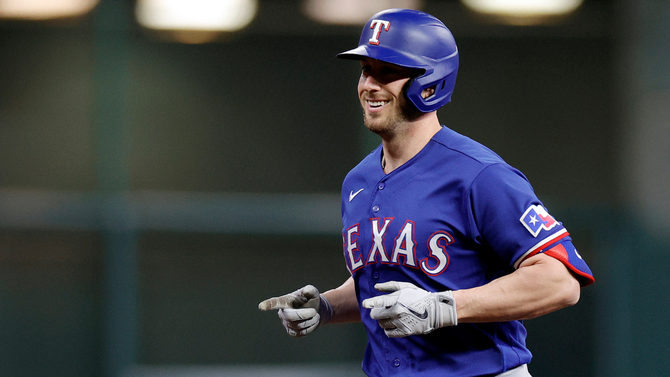
Getty Images40. Mitch Garver, DH/C
- The short version: Big-time strength with durability questions to match.
- Potential suitors: Mariners, Marlins, Padres
Baseball Prospectus analyst Robert Orr once found that the best predictor of future exit velocity was past exit velocities on fastballs. That’s good news for Garver, who ranked 13th in the majors last season in that respect, in between Giancarlo Stanton and Juan Soto. Not that you needed advanced data to recognize that Garver brings the boom. He homered 19 times in just 87 contests in 2023, and he’s launched 42 home runs in his last 209 games. Unfortunately, that span encapsulates three seasons. Maybe Garver’s next employer can help him stay on the field more frequently. We’re skeptical.
41. Jason Heyward, OF
- The short version: The latest to resurrect career in Dodgers blue.
- Potential suitors: Angels, Guardians, Giants
Here’s the statistic that sums up Heyward’s last few years: his 117 OPS+ in 2023 was nearly as high as the sum of his OPS+ in the previous two seasons (125). Heyward, who remains a brilliant defensive outfielder, barreled the ball more often and posted the lowest ground-ball rate of his career. Someone will likely enter next spring with designs on him serving as a contact and on-base-heavy option against right-handed pitching.
42. Michael Conforto, OF
- The short version: Sometimes the past stays the past.
- Potential suitors: Blue Jays, Diamondbacks, Padres
Allow us to recap Conforto’s last three seasons. In 2021, he had a poor walk year anchored by a dismal first half. He still rejected the Mets’ qualifying offer, hoping to find a lucrative multi-year deal on the strength of his track record as a well-above-average hitter. He didn’t. In 2022, Conforto didn’t play at all after suffering a shoulder injury in a spring workout (that he required on account of having the aforementioned qualifying offer dangling overhead). The following winter, he joined the Giants on a two-year pact that included an opt-out clause after the first season. Now, after essentially repeating his 2021 campaign, he’s decided to again test the open market. Will Conforto land the contract of his dreams? We’re not optimistic. His maximum exit velocity was the lowest of his career, and he’s a negative in the field and on the basepaths. It’s reasonable to wonder if Conforto could improve the farther he gets from shoulder surgery. It’s also reasonable to wonder if this is just who he is now.
43. Ji Man Choi, 1B
- The short version: Injury-prone first baseman hits when he’s in the lineup.
- Potential suitors: Marlins, Mariners, Angels
Choi barely played last season, and his topline statistics weren’t impressive when he did. He has enough history of hitting the ball hard and on a line for us to rank him anyway. Southpaws are Choi’s bête noire and he’s appeared in more than 100 games just once in his last three tries. In other words, whoever signs Choi will need both: a better Plan A against lefties, and a suitable Plan B against righties for whatever time he misses due to injury.
44. Garrett Cooper, 1B
- The short version: Older than you think, but still capable with the stick.
- Potential suitors: Dodgers, Brewers, Pirates
Cooper will celebrate his 33rd 𝐛𝐢𝐫𝐭𝐡day on Christmas, likely making him a few years older than your perception of his age. (He didn’t get his first real big-league look until he was already 28.) Seeing as how he’s also a right-right first baseman coming off a league-average season at the dish, it’s fair to think that the market will greet him with a chilly response. Believe it or not, we see some upside here. Cooper’s share of batted balls that 1) had an exit velocity north of 95 mph and 2) were launched between 10 and 30 degrees puts him in company with the likes of Luis Robert Jr., Zack Gelof, Jorge Polanco, and others who had better seasons than he did. There is some reason for concern about Cooper’s game, and that has to do with his increased likelihood to swing and miss. A one-year aberration, or the beginning of a decline? We’ll find out.
45. Carlos Santana, 1B
- The short version: Cromulent league-average bat on the older side.
- Potential suitors: Angels, Cubs, Nationals
Santana is no longer capable of performing to his past All-Star standards. These days, he’s more of a league-average bat who’ll flirt with 20 home runs and whose best defensive moments inspire a million dated Rob Thomas references. While we’re cruising down the Memory Highway, there had been hope that the switch-hitting Santana would benefit from the defensive positioning restrictions. He did to an extent, posting his highest batting average on left-handed ground balls since … hm, 2019. Oh well.
46. Frankie Montas, RHP
- The short version: Rough year and a half will limit interest.
- Potential suitors: Yankees, Angels, Giants
Montas was one of the top starters available at the 2022 trade deadline. He’s pitched nine times since, including just once last year. (He has a 6.15 ERA in those appearances.) Montas’ only appearance in 2023, an audition to prove he had recovered from shoulder surgery, saw his fastball click in about 1.5 mph slower than usual. Hm. Given that Montas’ game was built around power, it’s fair to wonder if he’ll be nearly as effective heading forward — and that’s without considering the health factor. We’re ranking Montas because someone will gamble on him being a contributor on a one-year deal.
47. Amed Rosario, 2B
- The short version: Lefty masher, but where to play him?
- Potential suitors: Athletics, Giants, White Sox
The three bright spots to Rosario’s game are 1) that he has a career .806 OPS against left-handed pitching; 2) that he’s a reliable bet to swipe 15-plus bags a year; and 3) that he’s about to enter his age-28 season. Otherwise? There’s not a lot to feel great about here. Rosario doesn’t hit righties nearly as well, and he grades as a poor defensive shortstop. The Dodgers had him playing second to end the year, and there have long been murmurs about trying him out in center field. The middle-infield market is such that some team might let him play the six anyway — even if it makes him a less valuable player overall.
48. Donovan Solano, 1B
- The short version: Hit line drive. Sleep. Repeat.
- Potential suitors: Twins, Guardians, Pirates
There’s an old maxim that states if you can hit then you will play. Solano is living proof. He’s short. He’s old. He’s landlocked to first base. He’s right-handed, both hitting and throwing. He’s never homered more than seven times in the majors. And yet he received a career-high 450 plate appearances last season — for a division-winning playoff team, mind you — because “Donnie Barrels” remains an apt nickname. All Solano does is hit line drives. As a result, he’s been a league-average or better hitter five years running. Why stop now?
49. Travis Jankowski, LF
- The short version: Slap-hitting speedster who fits the New Game.
- Potential suitors: Rays, Mariners, Dodgers
You wouldn’t want Jankowski as Plan A. You might not want him as Plan B. He’s coming off a decent run with a playoff team, however, and some front office will convince itself that he’ll remain a positive contributor in the new playing environment. Jankowski is a patient slap hitter who sprays a lot of low-flying batted balls around the field, particularly back up the middle. He’s also a burner who went 19 for 20 on stolen-base attempts and is an asset in left despite a weak arm. There’s a fairly good chance he ends the season as someone’s fourth outfielder. This rank is a bet that he begins it in a timeshare.
50. Colin Rea, RHP – Re-signed with Brewers
- The short version: Fill-in starter is more interesting than first blush indicates.
Rea started 22 times for the Brewers last season, amassing a 95 ERA+ and a 2.89 strikeout-to-walk ratio. He’s not flashy: he doesn’t throw hard, and he didn’t post an awe-inspiring strikeout or ground-ball rate. Rea was competent, however, and we think there’s room for him to upscale his swing-and-miss capacity with more liberal sweeper usage. That breaking ball generated a 36% whiff rate last season, the best of his offerings despite ranking fourth in usage rate. Maybe that’s wrong, and maybe Rea won’t be a league-average starter heading forward. In a time and a place where everyone is seeking a bargain, we’re at least open minded about Rea becoming one.
